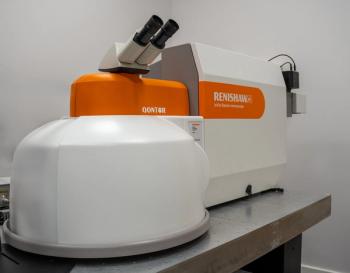
Revolutionizing Lettuce Farming: Artificial Intelligence and Spectroscopy for Precise Pigment Phenotyping
Researchers in Brazil leverage artificial intelligence algorithms and Vis-NIR-SWIR hyperspectroscopy to achieve precise pigment phenotyping and classification of eleven lettuce varieties, showcasing the potential of integrating advanced technologies in agriculture.
In a study published in the journal Plants, researchers from the Graduate Program in Agronomy at the State University of Maringá and the Department of Soil Science at the University of São Paulo in Brazil have delved into the integration of reflectance spectroscopy and artificial intelligence (AI) algorithms to enhance pigment phenotyping and classification in lettuce plants.
Led by Renan Falcioni, João Vitor Ferreira Gonçalves, Karym Mayara de Oliveira, Caio Almeida de Oliveira, José A. M. Demattê, Werner Camargos Antunes, and Marcos Rafael Nanni, the study explored the utilization of visible-near-infrared-shortwave-infrared (Vis-NIR-SWIR) hyperspectroscopy, also known as hyperspectral imaging or imaging spectroscopy,coupled with AI algorithms to classify eleven varieties of lettuce plants.
The team employed a spectroradiometer to collect hyperspectral data and applied 17 AI algorithms to accurately classify lettuce plants based on their pigment characteristics. The study found that the highest precision and accuracy were achieved using the full hyperspectral curves or specific spectral ranges, including 400–700 nm, 700–1300 nm, and 1300–2400 nm.
Remarkably, four machine learning (chemometric)models–AdB (adaptive boosting), CN2 (inductive model learner), G-Boo (gradient boosting), and NN (neural network)–demonstrated exceptional R2 (R-squared) and ROC (receiver operating characteristic), which are two different metrics used to evaluate the quality of models using multivariate analysis and machine learning, respectively.For the tested models, values exceeding 0.99 were achieved, emphasizing the potential of AI algorithms and hyperspectral fingerprints for precise classification and pigment phenotyping in agriculture (1).
Lettuce, a globally consumed vegetable with an estimated production of 27 million tons in 2022, presents various varieties with different pigments and antioxidant compounds. The rapid and accurate phenotyping of lettuce varieties holds significant importance for both traditional agriculture and modern vertical and indoor farming practices.
The integration of AI algorithms and hyperspectral technology, as demonstrated in this study, offers a promising approach to improving the accuracy and efficiency of crop classification. These advancements contribute to the development of more effective and sustainable agricultural practices, addressing challenges related to food production and waste.
The findings pave the way for further exploration of hyperspectroscopy and AI applications in precision agriculture, emphasizing the need for continued research to unlock the full potential of these technologies in diverse crop species and environmental conditions.
This collaborative effort between agronomy and AI showcases the transformative impact of interdisciplinary research, positioning spectroscopy and artificial intelligence as key tools in the advancement of modern farming practices.
This article was written with the help of artificial intelligence and has been edited to ensure accuracy and clarity. You can read more about our
Reference
(1) Falcioni, R.; Gonçalves, J. V. F.; de Oliveira, K. M.; de Oliveira, C. A.; Demattê, J. A. M.; Antunes, W. C.; Nanni, M. R. Enhancing Pigment Phenotyping and Classification in Lettuce through the Integration of Reflectance Spectroscopy and AI Algorithms. Plants 2023, 12 (6), 1333.
Newsletter
Get essential updates on the latest spectroscopy technologies, regulatory standards, and best practices—subscribe today to Spectroscopy.




